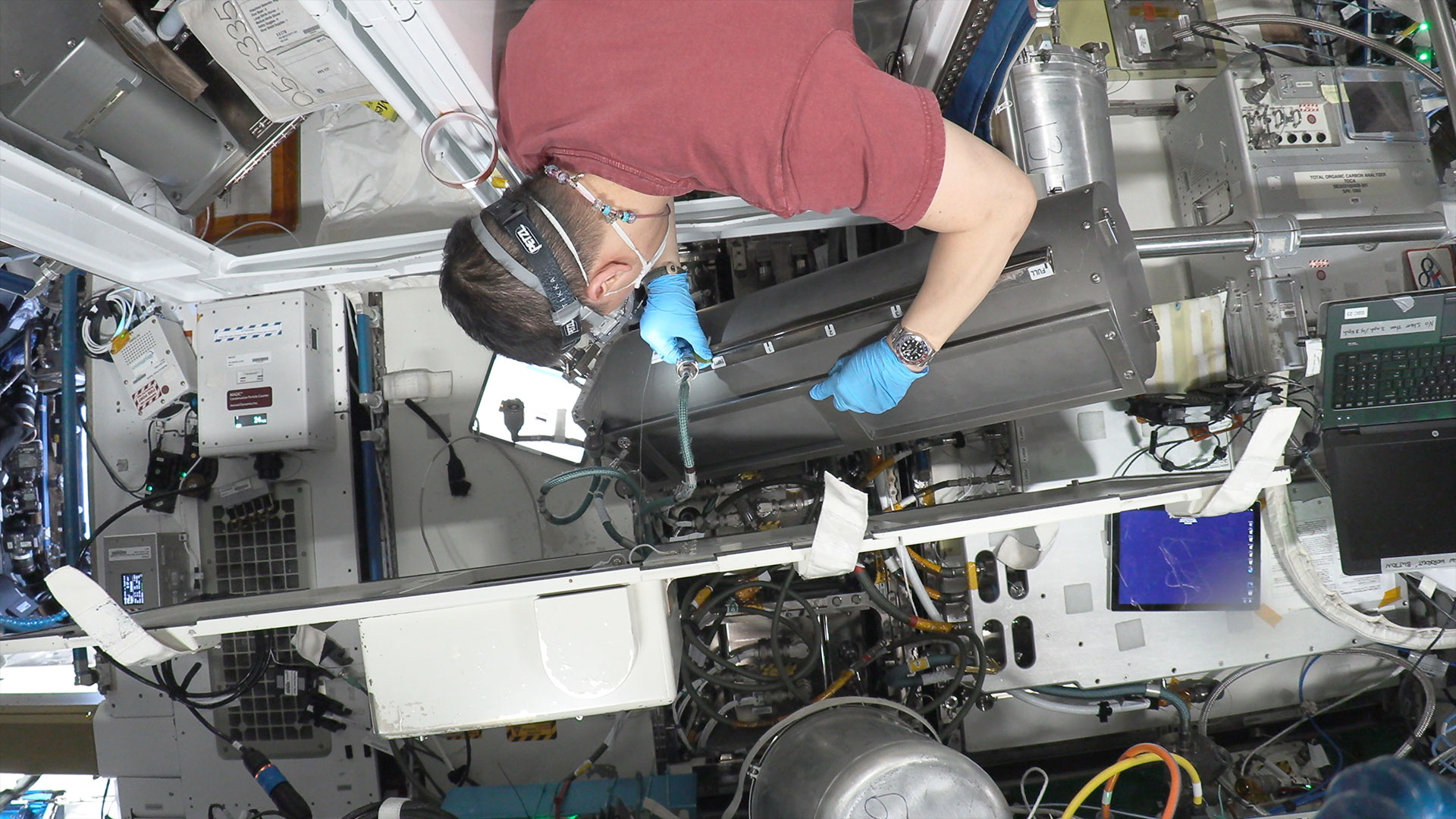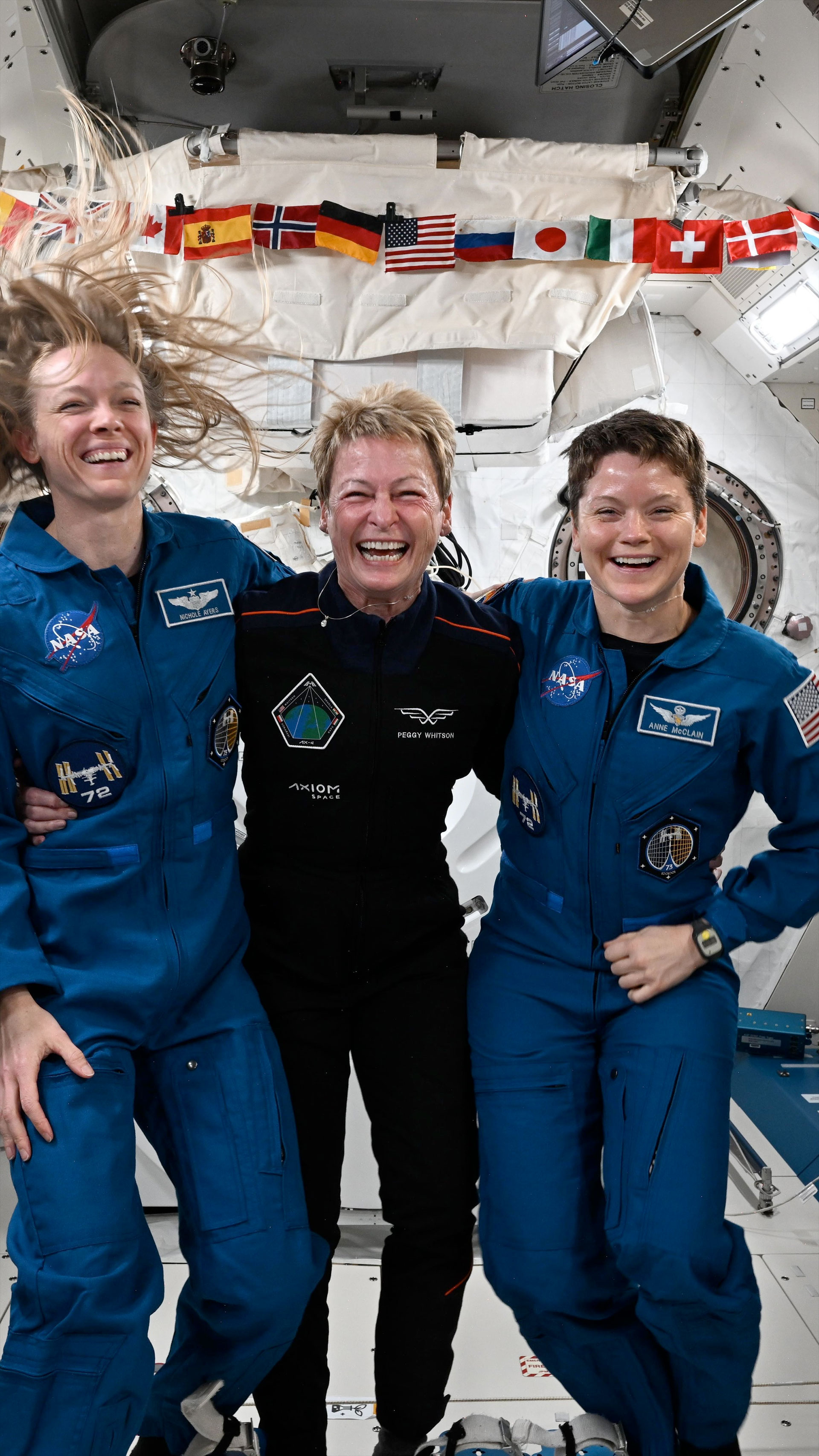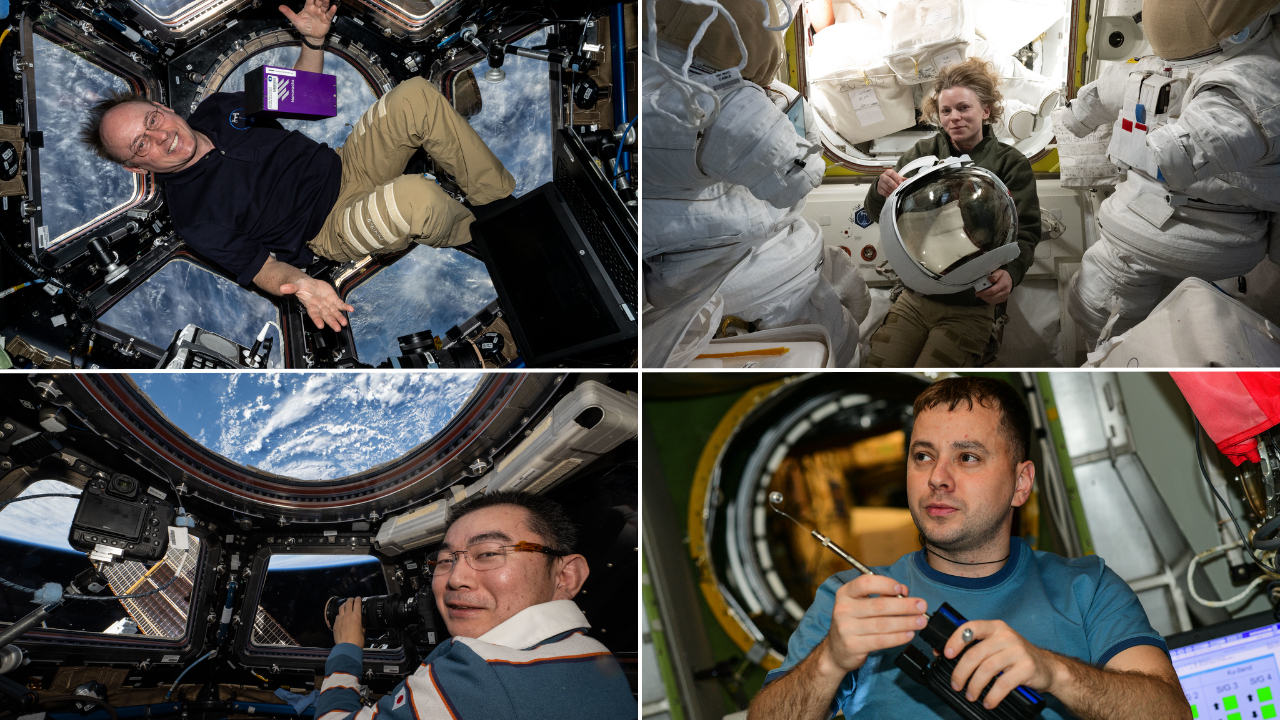Keeping wastewater flowing into tomorrow's coffee | On the ISS this week July 7 - 11, 2025
A look back at the week's activities for the Expedition 73 and Axiom Mission 4 crews.
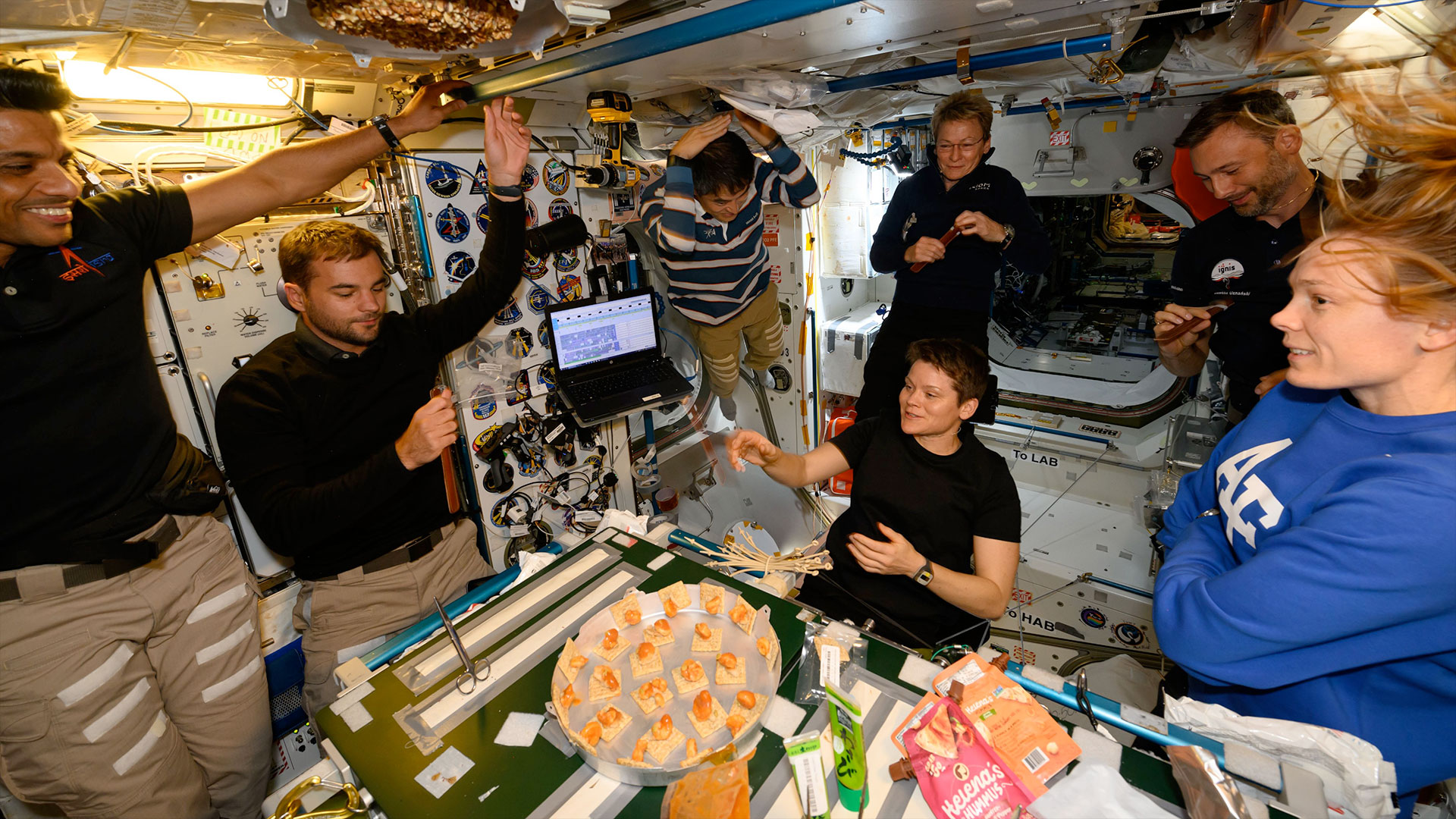
The Expedition 73 crew unpacked a newly arrived cargo craft, wrapped up a second week of science with an visiting crew of international astronauts and continued to conduct science and maintenance during their week aboard the International Space Station (ISS).
Orbital observation
"As the saying goes, yesterday’s coffee is today’s coffee," wrote NASA astronaut Jonny Kim, an Expedition 73 flight engineer, on social media.
The water reclamation system on the International Space Station recycles the crew's waste water — including their urine and perspiration — into clean drinking water, enabling their long stays in low Earth orbit. This week Kim was assigned to replace the recycling tank.
"At a high level, urine from astronauts is mixed with chemicals which are then stored in this recycle tank as a holding reservoir before additional processing," wrote Kim. "Though Houston [Mission Control] works hard to remotely control and run the system, sometimes an astronaut is required to physically maintain the equipment."
Science status
Among the research that was conducted by the Expedition 73 crew aboard the space station this week was:
Circadian Light — Flight engineer Nichole Ayers documented her experience being exposed to a new lighting system that gradually cycles through different settings as compared to the static illumination aboard the space station. The new approach is designed to improve cognitive performance and combat monotony.
Plant Cell Division — Expedition 73 commander Takuya Onishi used a centrifuge and a strain of cultured tobacco cells to study how varying levels of gravity affect plant formation. The JAXA (Japan Aerospace Exploration Agency) experiment is focused on the future of crop growth on the moon and Mars.
Breaking space news, the latest updates on rocket launches, skywatching events and more!
Muscle Stimulation — Ayers and her fellow NASA flight engineer Anne McClain used electrodes to send electrical impulses into Ayers' legs as a possible countermeasure to muscle atrophy. The technique may someday add to crew members' exercise regimes when in micro- and low-gravity environments.
Russian flight engineer Sergey Ryzhikov also set up a camera for students to point at Earth from the station's vantage point in orbit. Fellow cosmonaut Alexey Zubritskiy took part in a blood pressure study.
Station keeping
In addition to Kim working to service the water reclamation system, the Expedition 73 crew also devoted time to maintaining the space station's systems, including:
Progress M-31 (92P) — Flight engineers Sergey Ryzhikov and Alexey Zubritskiy opened the hatch leading into the newly docked Progress cargo spacecraft on Sunday (July 6) and, joined by fellow cosmonaut Kirill Peskov, worked throughout the week to unload the 3 tons of supplies it delivered.
Treadmill — Ryzhikov and Zubritskiy also repaired and replaced the treadmill on the Russsian segment of the space station on Tuesday (July 8).
Pressure valves — Flight engineer Jonny Kim worked on an issue with the valves used to depressurize Nanoracks' commercial airlock called "Bishop" by configuring cables and setting up hardware to support the troubleshooting effort.
Astronaut activity
Were this a sci-fi TV show, it might be called "Station Trek: The Next Generations"...
Expedition 73 flight engineers Nichole Ayers and Anne McClain have more in common with Axiom Mission-4 (Ax-4) commander Peggy Whitson than all having been (or currently are) NASA astronauts.
"Peggy Whitson was on the astronaut selection committee that selected me in 2013, and I was on the selection committee that selected Nichole Ayers in 2021," wrote McCain on social media. "Now, we all are living and working together aboard the International Space Station as part of Expedition 73 and Ax-4 missions (and having a LOT of fun in the process)."
"When you reach your goals, send the elevator back down!" McCain wrote.
Axiom Mission 4 (Ax-4)
The four members of Axiom Mission-4 have completed their second week aboard the space station, working on science and outreach activities up to the end of their stay.
Among the research they conducted this week was the growth of microalgae and nutrient-rich plants as possible future food sources; studies focused on how microgravity affects eye movement, motor skills and cardiovascular function, the latter as specifically related to blood flow to the brain; and a fluid dynamics experiment simulating planetary atmospheric phenomena such as the North Polar Hexagon on Saturn.
Polish astronaut Sławosz "Suave" Uznański-Wiśniewski of ESA joined Peggy Whitson to show eating the first pierogi in space, and the four crew members provided a live science update from orbit. On Saturday (July 12), they are scheduled to take part in an exclusive interview with CNN International.
The AX-4 crew is set to depart the space station on Monday (July 14) at 7:05 a.m. EDT (1105 GMT), given acceptable weather conditions for a splashdown off the coast of California.
By the numbers
As of Friday (July 11), there are 11 people aboard the International Space Station: Expedition 73 commander Takuya Onishi of JAXA, Anne McClain, Nichole Ayers and Jonny Kim of NASA and Kirill Peskov, Sergey Ryzhikov and Alexey Zubritsky of Roscosmos, all flight engineers, as well as Ax-4 commander Peggy Whitson, pilot Shubhanshu Shukla of ISRO and mission specialists Sławosz Uznański-Wiśniewski of ESA and Tibor Kapu of HUNOR.
There are three docked crew spacecraft: SpaceX's Dragon "Endurance" attached to the forward port of the Harmony module, Dragon "Grace" on the space-facing port of Harmony and Roscosmos' Soyuz MS-27 attached to the Earth-facing port of the Prichal node.
There are two docked cargo spacecraft: Roscosmos' Progress MS-30 (91P) attached to the aft port of the Zvezda service module, and Progress MS-31 (92P) docked to the space-facing port of the Poisk module.
As of Friday, the space station has been continuously crewed for 24 years, 8 months and 10 days.
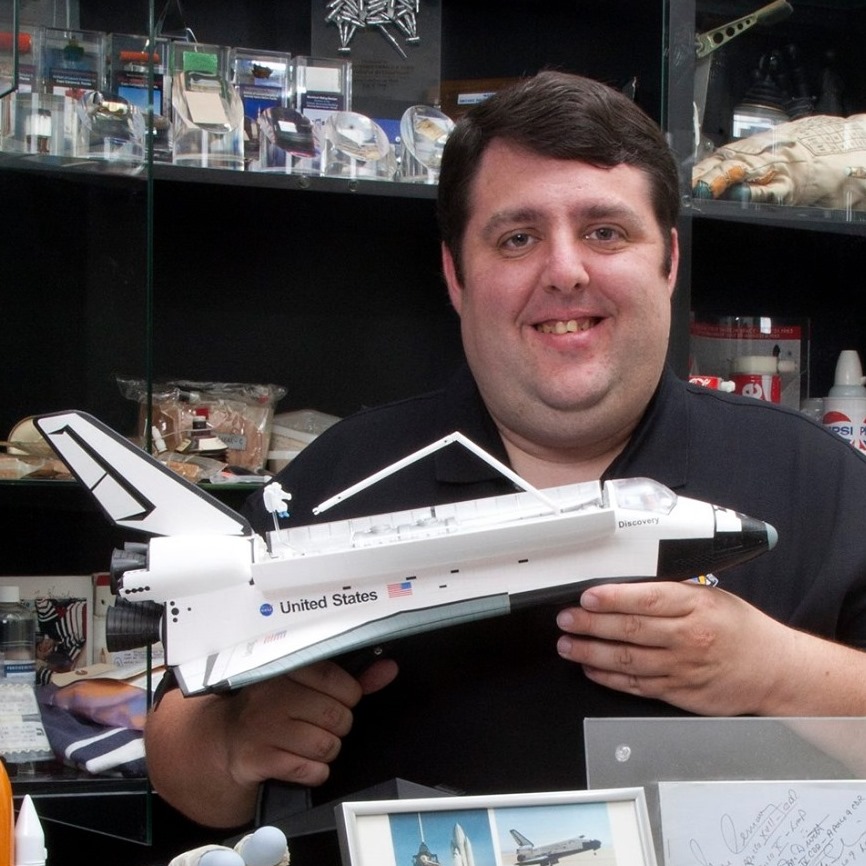
Robert Pearlman is a space historian, journalist and the founder and editor of collectSPACE.com, a daily news publication and community devoted to space history with a particular focus on how and where space exploration intersects with pop culture. Pearlman is also a contributing writer for Space.com and co-author of "Space Stations: The Art, Science, and Reality of Working in Space” published by Smithsonian Books in 2018.
In 2009, he was inducted into the U.S. Space Camp Hall of Fame in Huntsville, Alabama. In 2021, he was honored by the American Astronautical Society with the Ordway Award for Sustained Excellence in Spaceflight History. In 2023, the National Space Club Florida Committee recognized Pearlman with the Kolcum News and Communications Award for excellence in telling the space story along the Space Coast and throughout the world.
You must confirm your public display name before commenting
Please logout and then login again, you will then be prompted to enter your display name.
